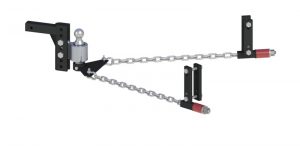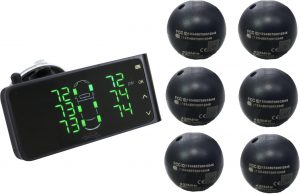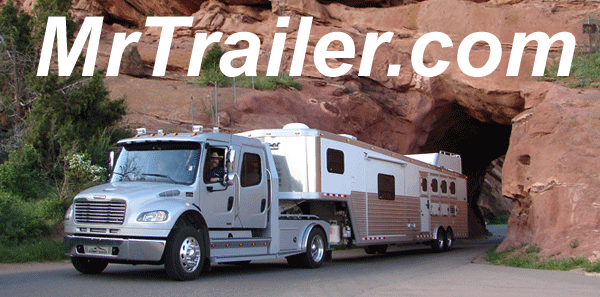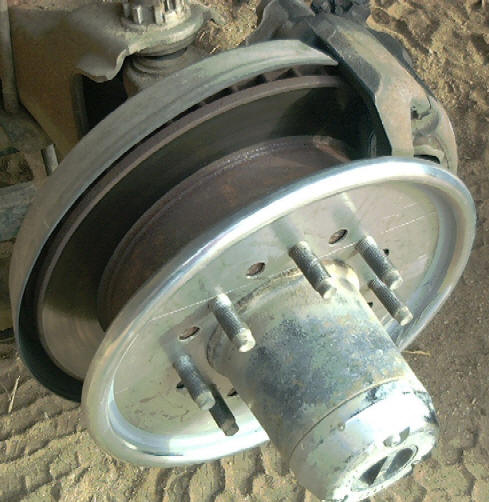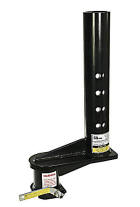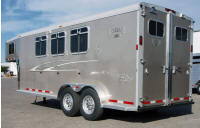|
Monroe makes a bed for the big boys. GMC C4500 Topkick and why you should consider a bigger truck for towing. Featuring Logan Aluminum XT
|
hav2ride already has my opinion of the C4500. Monroe sent me one last summer and I towed several trailers with it. The big test was to see how the Monroe bed would fit under horse trailers. The tailgate was around 58″ for the 2 wheel drive which is lower than a 4 x 4 Ford F150 04 and newer. It fit under the 8 or 9 horse trailers fine with 8″ or more bed rail room. My only negative experience was the ride was rougher than a GM 3500. Like all wide trucks, M2, International, Pete etc. they have a wide front end so the shoulder of dirt roads can be spooky.
 But the C4500’s frame is 80k psi about 3 times more than a 3500, more fuel tank options, more axle ration options, (2500/3500 only have the 3.73 axle with the Duramax). C4500 has 15″ disc brakes all around, I think the 3500 is 12″. Tip forward cab with swing out components, this also gives you great visibility. The C4500 can have factory air seat, air cab, and rear air suspension, the 3500 not. But the C4500’s frame is 80k psi about 3 times more than a 3500, more fuel tank options, more axle ration options, (2500/3500 only have the 3.73 axle with the Duramax). C4500 has 15″ disc brakes all around, I think the 3500 is 12″. Tip forward cab with swing out components, this also gives you great visibility. The C4500 can have factory air seat, air cab, and rear air suspension, the 3500 not.
C4500 will turn dramatically tighter than a 3500, I drove this one thru bank drive-ups, McDonalds drive-thru’s, parked it at Walmart, drove it everywhere and used the air horn alot. The cab is gigantic since it is a full size van cab, this gives you a dog-house to get to the back of the engine, large windows, tall enough ceiling to almost stand up in. The rear seat is larger than Dodge Mega-cab and you can look out the rear picture window and see the gooseneck ball.
It’s diesel power is rated lower than a Duramax in the 2500/3500 because as with most medium trucks it’s designed to be loaded 90% of the time not 10%. But with the lower axles, you still have excellent towing ability. The C4500 comes with a factory standard exhaust brake. Now for tow ratings it’s about equal to the 3500 because of CDL 26,000 GVW laws. It should be rated to tow 10,000#’s more than a 3500 and have argued with GM on that point. We might see that in 2008 (January) I could go on an on, but I suppose to be writing an article about the 2005-6-07-08 C4500/5500.
And that’s my story and I’m stick’in to it.
Just like in a Ford F450/550, the C4500/5500 only one diesel option. And that is the comparison. C4500 is a class 4 truck just like a Ford F450. So it’s not a fair comparison to put these 1 1/2 ton trucks in the class with Freightliner M2, Ford 650, Pete 330 and International 4300/4700 all class 6 trucks and above. These semi-truck manufactures take their over the road trucks, lower the classification on the springs and offer hydraulic brakes and make them hauler trucks. This is where the momentum is growing, folks are getting larger trailers, so all the truck manufactures are looking to sell there. Also be aware of what the excise tax (12% like an over the road tax) is. The IRS raised and clarified that last year.
I know the C4500 is a tall truck, so we tend to compare it with semi-trucks. Compare it to F450’s and the new HD 3500 C&C Dodge coming this fall. Ford owned this market for so long with GM coming late and Dodge coming later. I dream of M2’s too. And if I towed heavy trailers all the time, I’m sure I’d have one. I’m thinking of getting a 3/4 ton now and might even get a gas engine as much as I love diesels. But it’s an economic decision not emotional. Yeah right.
As I said in my original post in this thread, GM rates the Duramax lower horsepower and torque in the C4500/5500 vrs. HD 2500/3500. This was common on 2 ton trucks in the past and you will see this with a gas engine in a 1/2 ton verses the same gas engine in a 3/4 ton. The reason given by GM management as well as a common practice in the past was because the larger class 4 and above cab & chassis trucks where designed to be loaded or towing 90% of the time verces 10% of the time for a pickup truck. Detuning the engine was to increase life.
Ford and GM rates their diesels in class 2 and 3 trucks at 250,000 miles life expectency and Dodge rates their diesels in class 2 and 3 trucks at 300,000 miles. As is a published press release from the manufactures. The real question with modern diesel trucks isn’t how long will the engine last but how long will the transmission last. Allisons have an edge there. Cat is pushing their auto tranny in RV’s this year. We’ll see how well the new 6 speed auto from Dodge does this fall.
In the race to build a more power diesel pickup truck, the big three are neck and neck. With power covered, the #1 priority for today’s towing vehicle, is to stop the trailer safely. Trailers have grown during the truck power race, with Living Quarters horse trailers now a common site at horse events. Living Quarters can add 4,000 to 10,000 pounds to a horse trailer, so it’s like being loaded all the time. This means you need a truck that is designed for full time work. The GM C4500 Topkick (GMC) and Kodiak (Chevy) is that truck. With the same Duramax diesel and Allison Automatic transmission as the HD 2500 and 3500, the C4500 is made for controlling trailers. Besides the grade shifting of the Allison auto which allows you to downshift just by tapping the brake pedal, locking each gear similarly to a manual transmission, but the C4500 has a standard factory exhaust brake. The exhaust brake is like sticking a potato in your exhaust, it slows you down with engine back pressure without the brakes. And it’s automatic, you can flip the switch or leave it on and it will shut off at slow speeds or if you accelerate. Those two features, grade shifting and exhaust brake, are dramatic in slowing you down with a heavy trailer coming down the fast side of a mountain. I towed the Logan LQ horse trailer (above) from Transwest Truck Trailer RV of Longmont to Steamboat and back. Rabbit Ears pass was a breeze with this rig.
And then if you do need to use the brakes, the C4500 has 15″ 4 wheel -disc brakes, 19.5″ wheels with 12 ply tires. Heavy duty is the theme here, the frame is rated 80,000 psi with massive axles and springs. Usually you can see the big frame as this truck coming from the factory as a cab and chassis with no bed. This is where Monroe comes in. Monroe makes a couple of bed choices for the C4500/5500. The one I used is a lot like the 8′ dually bed on a GM 3500. This makes it look more like a refined pickup truck instead of a monster truck. Having a normal bed makes the C4500 more versatile than a flatbed. And you can go to any GM dealer and buy this truck equipped this way with the Monroe package option. The green C4500 GMC Topkick I towed with had the full package with Link rear air suspension, Class V receiver hitch, Hitch Cam, B&W Turn-Over Ball and Companion mini-5th wheel, Pace Edwards power tonneau cover, tube chrome grill, nerf running boards all the way back to the duals, air seats, leather, power folding rear couch, 10″ DVD, wood grain dash inserts, brake controller, dual tanks and much more.
Visibility is spectacular with the Monroe bed, with the C4500 short nose, large windows, giant rear window that lets you see to the side of your truck and look at the gooseneck ball when you hook up. The optional Hitch Cam is great for backing up and seeing what’s going on behind you. It’s a easier truck to handle, park, back, and corner than most full size pickup trucks 1/2 it’s size. Like your car the C4500 has heated mirrors and rear window. With a 53 degree front wheel cut, it turns a tighter circle than any full size pickup truck. Something to get used to is the wide front axle. Which helps it turn tighter, but on dirt roads or narrow two lane highways you need to practice finding the right front tire as it will get closer to the edge than what you’re use to in a pickup truck.
The first concern I had was the bed height for gooseneck trailers. Seen here backed under a Sundowner horse trailer from Parker Trailers of Parker. At 59″ to the top of the tailgate, this puts the C4500 with the Monroe bed at the same height as a 2005 Ford F150 4×4. I backed under 6 horse trailer brands with more than 6 inches of bed rail clearance on all and more than 8 inches on most. With a rear air suspension, you can dump the air on the rear axle to lower the bed for backing under trailers. I used this often.
I also backed under some 5th wheel RV trailers, shown here under a Durango from Economy RV of Greeley. The tall cab is unbelievable, you could walk between the front seats to get to the folding rear couch. Head room for the tallest cowboy hat. The C4500 with the Monroe package was a treat to drive, even with a large horse trailer pushing me down the hills we have in the Colorado Rockies. I felt comfortable and in control, which is a good feeling on I-70 at 11,000 ft on a 6% grade in heavy traffic.
Thanks, to Transwest Truck Trailer RV, Economy RV and Parker Trailers.
|
In the race to build a more power diesel pickup truck, the big three are neck and neck. With power covered, the #1 priority for today’s towing machine, is to stop the trailer safely. Trailers have grown during the truck power race, with Living Quarters now a common site at horse events. Living Quarters can add 4,000 to 10,000 pounds to a horse trailer, so it’s like being loaded all the time. This means you need a truck that is designed for full time work. The GM C4500 Topkick (GMC) and Kodiak (Chevy) is that truck. With the same Duramax diesel and Allison Automatic transmission as the HD 2500 and 3500, the C4500 is made for controlling trailers. Besides the grade shifting of the Allison auto which allows you to downshift just by tapping the brake pedal which locks each gear similarly to a manual transmission, but the C4500 has a standard factory exhaust brake. The exhaust brake is like sticking a potato in your exhaust, it slows you down with engine back pressure without the brakes. And it’s automatic, you can flip the switch or leave it on and it will shut off at slow speeds or if you accelerate. Those two features, grade shifting and exhaust brake are dramatic in slowing you down with a heavy trailer coming down the fast side of the mountain. And then if you do need to use the brakes, the C4500 has 15″ brakes, 4 wheel -discs, 19.5″ wheels with 12 ply tires. And if that’s not enough, the frame is rated 80,000 psi with massive axles and springs. Usually you can see the big frame as this truck comes from the factory as a cab and chassis with no bed. This is where Monroe comes in. Monroe makes a couple of bed choices for the C4500/5500. The one I used is a lot like the dually bed on a GM 3500. This makes it look more like a refined pickup truck instead of the monster truck it is. And you can go to any GM dealer and buy this truck equipped this way with the Monroe package option. The green C4500 GMC Topkick I towed with had the full package with Link rear air suspension, Class V receiver hitch, hitch cam, B&W Turn-Over Ball and B&W mini-5th wheel Companion, Pace Edwards power tonneau cover, tubed chrome grill, nurf running boards all the way back to the duals, air seats both, leather, power folding rear couch, 10″ DVD, wood grain dash inserts, brake controller, dual tanks and much more
Visabilty is spectacular with the bed, short nose, large windows, giant rear window that lets you see to the side and the bed hitch. The optional Hitch Cam is great for backing up. a easier truck to handle, park, back, corner than most pickup trucks 1/2 it’s size. Heated mirrors and rear window. 53 degree front wheel cut, so it turns a tighter circle than any full size pickup truck. Something to get used to is the wide front axle. Which helps it turn tighter, but on dirt roads or narrow two lane highways you need to practice finding the right front tire as it will get closer to the edge than what your use to in a pickup truck.
The first concern I had was the bed height for gooseneck and 5th wheel trailers.
Dump the air on the rear axle to lower the bed for backing under trailers.
The tall cab is unbelievable, you could walk between the front seats to get to the folding rear couch. Head room for the largest cowboy hat. It’s like a full size van, which the cab is from the GM full size vans with the rear engine cover and front doors.
Monroe equipped this rig right. With Link Hitch cam and 8′ bed
Duramax designed for longer life. In the July 2005 issue, alot of the specs where covered.
Now as with any trailer pulling truck, you need to know the GCWR (Gross Combined Weight Rating,) which combines the truck and trailer. Also you need the tongue weight, as well as the axle ratings. All this combined to give you the big picture for your big truck option.
As with all the newer pickup trucks, you still have to be careful of dips and holes. I did on purpose drive in a hole. It’s like a full size van, which the cab is, from the GM full size vans with the rear engine cover and front doors.
Why not a 2-ton?
On the truck news front, the 2003 Dodge all new 2500 with the new 5.7L (350 cu) Hemi’s are arriving in showrooms now. All I’ve seen are long beds. The short bed has been shortened 3 inches just like the 2002 Dodge 1500. Something to remember when pulling a gooseneck that this new truck in a short bed has a 6’3″ bed. I’m trying to find out when the new quieter more powerful diesel will arrive. They were slated for November but manufactures enjoy surprising me.
I have worn out my share of trucks. No I really mean I wore them out! When I was done with them they were worth about $20 a ton for scrap metal. The springs were arced the wrong way, the box was gone, and you couldn’t tell what color the engine was from the oil dripping off it. But by then I could replace the starter, alternator, u-joints or clutch with my eyes closed.
Being a rancher/farmer meant my truck had to pay for itself with use. Being overloaded most of the time is what got the job done. I hauled livestock, hay, wool, tractors, balers, backhoes, buildings, trees and whatever “kind of fit” the trailer. I was overweight, over width, and under trucked. No not me, the truck!
After I replaced another set of u-joints in the drive shaft, I thought maybe I’m working my 1-ton dually too much. It had 300,000 miles on it and my Korean replacement door from the last time I jackknifed the trailer was leaking so much air I couldn’t hear the weather report on the AM radio. So time for my next workhorse. I saw an ad for some furniture van body 2-ton trucks. They had 90,000 miles on them so they were already broke-in. My neighbor and I each bought one. Mine was a C65 Chevy. I took the 18 ft. van body off, leaving a flatbed and added a recessed gooseneck ball to the rear of the rear axle. I pulled a 32 ft. flatbed triple axle trailer with it and had 12 feet to haul cargo behind the cab in front of the gooseneck. That was the most reliable truck I ever pulled with. It had a 366 cu engine and a 5-speed manual transmission with a 2-speed Eaton axle. I loved that truck and couldn’t hurt it. Ten gears, I was in heaven! If even rode nice. I couldn’t tell it was loaded, it had low axle ratios and would pull anything 70 MPH. Tires cost more but they also lasted longer. The most expensive repair I did to the truck was replace the king pins in the front axle. The next 100,000 miles were all trailer miles. So I do like bigger trucks with bigger brakes, trannies, axles and springs.
If you also decide you pull too much for a 1-ton, now the next decision is between new and used. One of the nice things about a used big truck, (two-ton or 26,000 GVWR) is they can last like an “Eveready Battery Bunny.” If you go out to farm country, you can find the old “Over The Road” rigs that are 30 years old plus still hauling corn or hay. Some trailer dealers also sell big trucks even conversions that are classified as an RV. The rental businesses like U-haul or Penske sell thousands of used 2-ton trucks a year. Penske is friendly with GM so a lot of these used van trucks can be found at new GMC franchises. Several of the 2-ton used trucks that U-haul and Penske would have will have the a low profile kit with just 16 in. tires, so they won’t be any harder to climb up into than a 1-ton. Some of them will even have Allison automatics, probably AT545 and a few diesels. I think my truck came from Mayflower originally. It had a hydraulic lift, which I used a couple of years and then took off. So check out a few of the big moving companies also.
Most of the 2-ton trucks will have 6 to 10 gears in the manual transmission or 4 to 6speeds with an automatic transmission. These trucks are made to be loaded all the time. My 2-ton gave me the least amount of trouble hauling loads and pulling trailers. It’s also nice to have a heavy truck pulling the trailer. It gives you more control when you brake going down hill by keeping the trailer behind you instead of trying to pass you.
If you choose a new big truck, choices range from GM 6500, 7500 and Ford F650, F750 to Freightliner FL60 ,FL70, International 4700, Peterbuilt T-330 and Kenworth T-300. And with the big boys you can get engine or exhaust brakes, crew cabs, any diesel engine you want, more gears, air ride and air seat. Yes air seat! Now the biggest down side is the cost. So it’s a bigger decision. You can finance or lease for a longer term. And they have a better resale value. You are also looking at a truck designed for one million miles instead of a target of 300,000 miles for a good pickup truck diesel.
Another consideration is drivers license. I had a Class A drivers license in Colorado, which would let me drive anything in the old days, and I could have grand fathered in with the CDL license but I wasn’t smart enough back then to see the need.
This is a gray area for the whole country. Pickup trucks pulling trailers and big trucks pulling gooseneck trailers seems to confuse the DOT, (Department of Transportation.) I know some people who get tickets because they are over 26,000 GVWR (Gross Vehicle Weight Rating) and don’t have a CDL and log books and I know people who have never been pulled over with rigs that look totally commercial. Even with national CDL’s you would think there is some kind of constant rule but each state DOT seems to not know what to do. 10 years ago in Colorado when I pulled everyday, I never stopped in a port with a loaded trailer even when I hauled large round bales 12’ wide. But when I went threw Nebraska even with a stock trailer, I had to stop at the ports. Now the portable ports in Colorado would stop everybody. With the newest trend in the 2- ton trucks that are 26,000 GVWR, you add a trailer and you could be over the legal GVWR again. The one thing the DOT does agree on is RV’s. Pull a fifth-wheel RV or a horse trailer with Living Quarters and I haven’t seen where they require a CDL or logbook.
Another problem with a big truck and a short wheelbase and a single rear axle is the bounce. Some people ad weight to the rear frame so when not pulling a trailer is will bounce less. A nice heavy flat bed will help. If you always are hooked to a trailer it won’t be a problem. My truck had a 18’ flatbed, so I did use it without the trailer to haul things. It worked well for me but not everyone wants that long of a rig with a trailer.
Now as with any trailer pulling truck, you need to know the GCWR (Gross Combined Weight Rating,) which combines the truck and trailer. Also you need the tongue weight, as well as the axle ratings. All this combined to give you the big picture for your big truck option.
Love the Compatible mini 5th wheel from B&W. Love the Hitch cam
  Drive thru and McDonalds. Drive thru and McDonalds.
Yes, this tall boy fits under most trailers. 59″ top of the tailgate. Cimarron, Hart, Logan, Featherlite, Sundowner, Bison
Big anti-roll bar on rear axle
#3
     
     
     
  
    
  

Thanks to Monroe, Transwest Trailer Truck RV, Economy RV, Parker Trailers, Trailer Source, Elizabeth RV, Sundance Lance Campers,
|
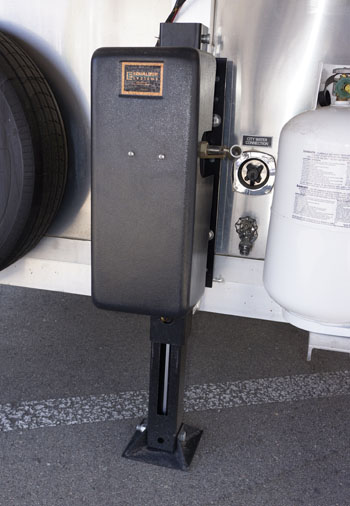
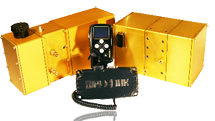

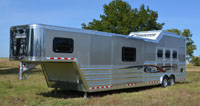

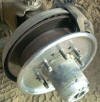 Automatic Tire Balancers for Trucks and Trailers25% to 50% longer tire life, eliminates cupping and tire vibration
Automatic Tire Balancers for Trucks and Trailers25% to 50% longer tire life, eliminates cupping and tire vibration
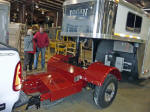 Automated Safety Hitch Help for your Rear Truck Axle, an inline dually
Automated Safety Hitch Help for your Rear Truck Axle, an inline dually

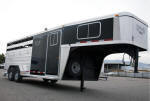



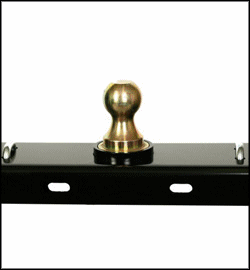
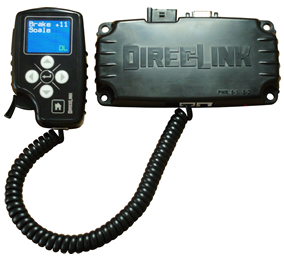

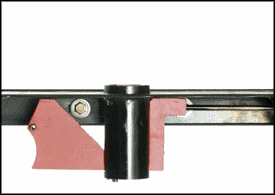
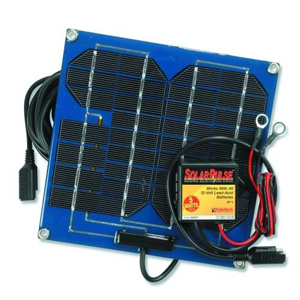



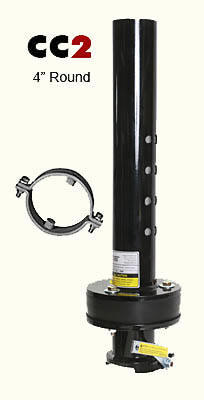 Popup Cushion Coupler Happy Horses Smooth Trailers
Popup Cushion Coupler Happy Horses Smooth Trailers


